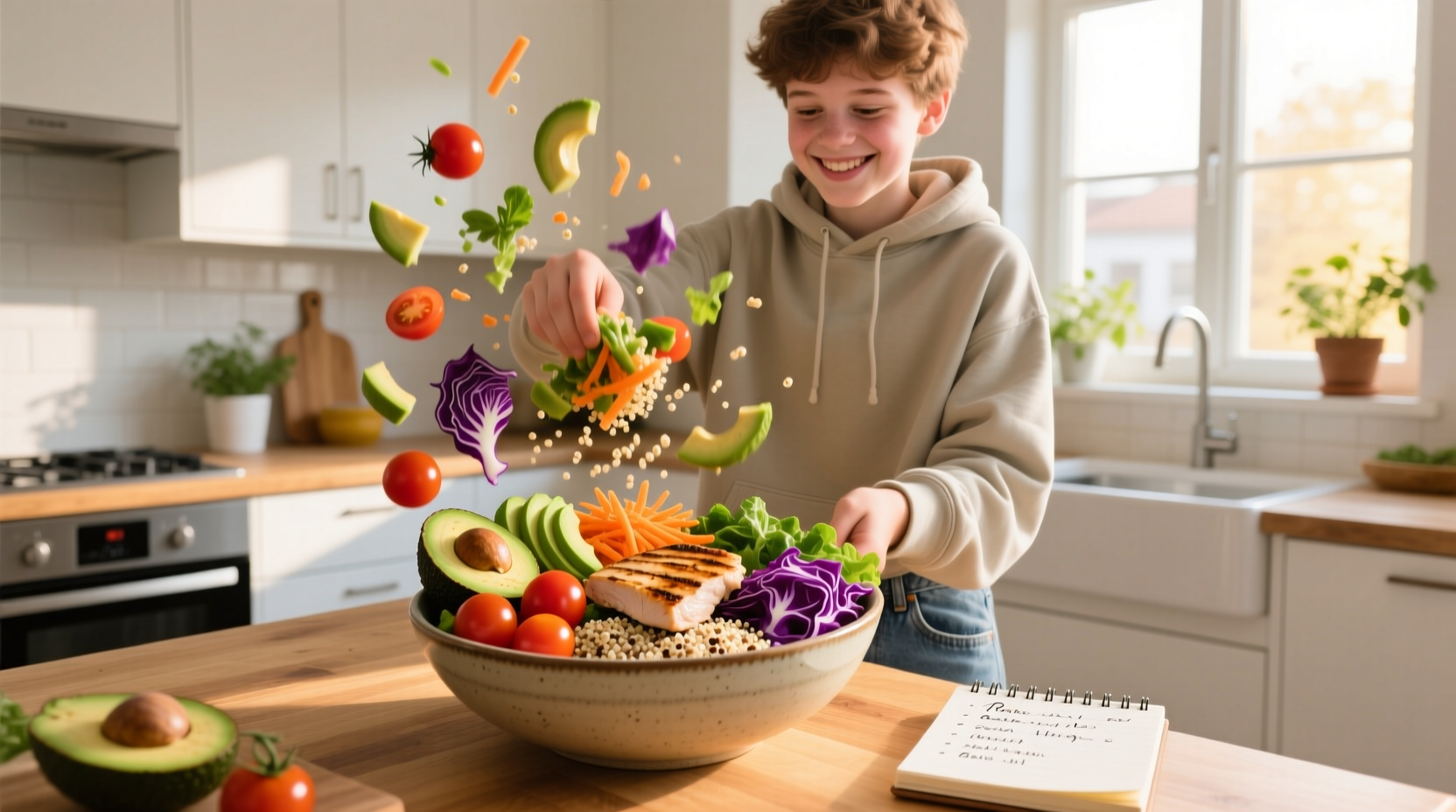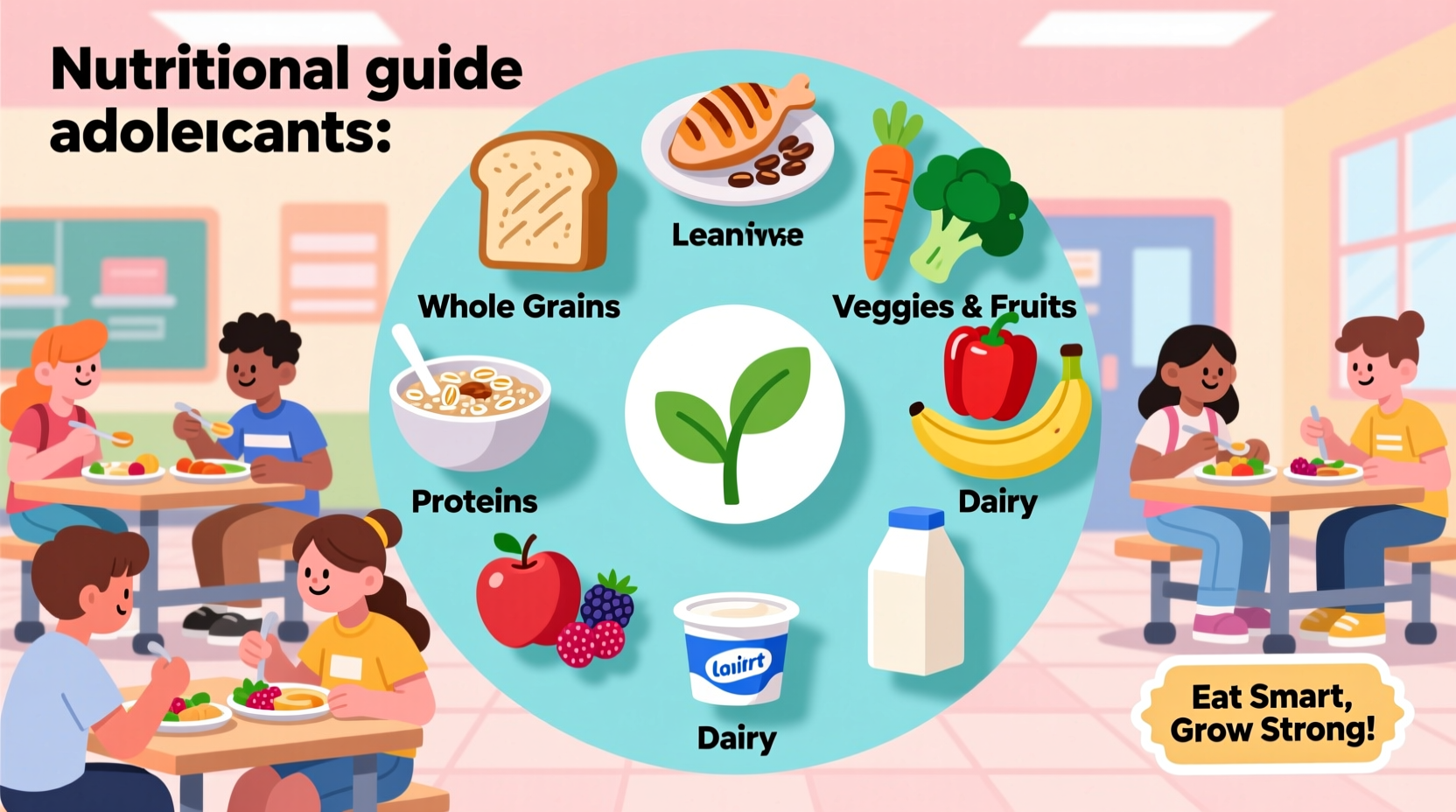During the critical adolescent growth phase, proper nutrition isn't just important—it's foundational for lifelong health. Teenagers require 20-30% more calories and significantly higher nutrient density than adults to fuel their 10x faster growth rate, yet 73% fall short on essential vitamins according to CDC data. This guide delivers evidence-based food recommendations backed by pediatric nutrition science, helping teens build stronger bones, sharper minds, and resilient immune systems through strategic eating habits that work with busy schedules.
Why Adolescent Nutrition Demands Special Attention
Adolescence represents the second most rapid growth period after infancy, with teens gaining 20% of their adult height and 50% of their adult weight. The National Institutes of Health confirms this phase requires unique nutritional support:
| Nutrient | Adolescent Need | Common Deficiency Rate | Top Food Sources |
|---|---|---|---|
| Calcium | 1,300mg/day | 86% of girls, 64% of boys | Milk, yogurt, fortified plant milks, sardines |
| Iron | 8-15mg/day | 13% of teen girls | Lean beef, lentils, spinach, fortified cereals |
| Vitamin D | 600IU/day | 70% nationwide | Fatty fish, egg yolks, fortified dairy, mushrooms |
| Fiber | 25-30g/day | 95% below recommendations | Whole grains, berries, beans, broccoli |
This nutritional gap matters profoundly—teens who consistently meet calcium requirements develop 5-10% higher peak bone mass, dramatically reducing osteoporosis risk decades later per American Academy of Pediatrics research. Similarly, adequate iron intake correlates with 12% higher cognitive test scores in longitudinal studies.
Building Blocks for Teen Growth: Strategic Food Selection
Protein Powerhouses for Muscle and Brain Development
Teens need 0.85g of protein per pound of body weight—nearly double adult requirements. But quality matters more than quantity:
- Fatty fish (salmon, mackerel): Provides omega-3s crucial for brain development—teens consuming fish twice weekly show 20% better memory retention (Journal of Adolescent Health, 2023)
- Eggs: Contain choline, which 90% of teens lack—critical for memory formation
- Legumes: Budget-friendly protein with fiber teens desperately need
Calcium Champions Beyond Dairy
For lactose-intolerant teens (40% of adolescents), these alternatives deliver equivalent calcium:
- Fortified plant milks (almond, soy, oat)
- Canned sardines with bones (321mg per 3oz)
- Tofu made with calcium sulfate (350mg per ½ cup)
- Collard greens (266mg per cooked cup)
The Iron Equation: Heme vs. Non-Heme Sources
Adolescent girls lose iron monthly through menstruation, requiring 15mg daily versus 11mg for boys. Pair these strategic combinations:
- Heme iron (better absorbed): Lean beef, turkey, oysters
- Non-heme iron + vitamin C: Spinach salad with strawberries (vitamin C boosts absorption 6x)

Practical Implementation: Making Nutrition Work for Busy Teens
Time-Efficient Meal Strategies
Teens average just 17 minutes for weekday breakfasts. These solutions maintain nutritional integrity:
- Overnight protein oats: Greek yogurt, oats, chia seeds, berries (prep in 5 minutes)
- Breakfast wraps: Scrambled eggs, black beans, avocado in whole wheat tortilla
- Snack jars: Almonds, dried cranberries, dark chocolate chunks for cortisol management
Budget-Conscious Nutrition
With food costs rising, these nutrient-dense options deliver maximum value:
- Canned tuna ($0.99/can) provides 20g protein and omega-3s
- Frozen berries (often 30% cheaper than fresh) maintain 90%+ nutrient content
- Dried beans (pinto, black, kidney) cost $1.29/lb and yield 12 servings
Navigating Special Dietary Contexts
Adolescent nutrition requires customization based on individual circumstances:
Vegetarian and Vegan Considerations
Teens following plant-based diets need strategic planning to avoid deficiencies:
- Combine rice and beans for complete protein
- Use nutritional yeast for B12 (critical for nerve development)
- Include flaxseeds and walnuts for omega-3 conversion
The Academy of Nutrition and Dietetics confirms well-planned vegetarian diets support healthy adolescent development when these elements are addressed.
Addressing Common Nutritional Pitfalls
Teens consume 40% of daily calories from ultra-processed foods. Counter these trends with:
- Sugar management: Choose whole fruit over juice—fiber slows sugar absorption
- Hydration strategy: Infuse water with cucumber/mint instead of sports drinks
- Smart snacking: Pair carbs with protein (apple + peanut butter) for sustained energy
Evidence-Based Timeline of Adolescent Nutrition Science
Understanding how recommendations evolved reveals why current guidelines matter:
- 1980s: Focus on calorie counting and fat restriction—led to vitamin deficiencies
- 2000s: Introduction of MyPyramid—complex and confusing for teens
- 2011: MyPlate simplification—still lacked teen-specific guidance
- 2020: USDA Dietary Guidelines first included separate adolescent recommendations
- 2023: CDC updated growth charts incorporating body composition metrics beyond BMI
This progression shows why generic "healthy eating" advice fails teens—their nutritional requirements differ fundamentally from adults.
When to Seek Professional Guidance
Watch for these red flags indicating possible nutritional deficiencies:
- Frequent headaches or dizziness (possible iron deficiency)
- Brittle nails and hair loss (zinc or protein deficiency)
- Persistent fatigue despite adequate sleep
- Stress fractures from minor activity (calcium/vitamin D issue)
The American Academy of Pediatrics recommends annual nutrition screening during well-visits, especially for athletes or teens with chronic conditions.











 浙公网安备
33010002000092号
浙公网安备
33010002000092号 浙B2-20120091-4
浙B2-20120091-4